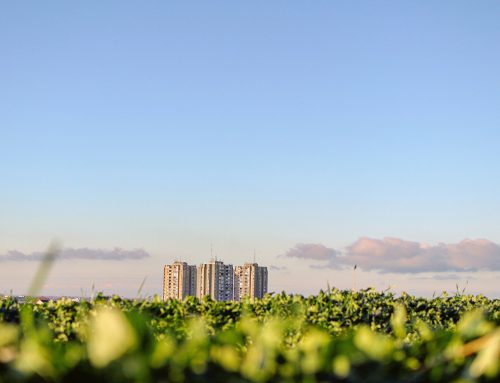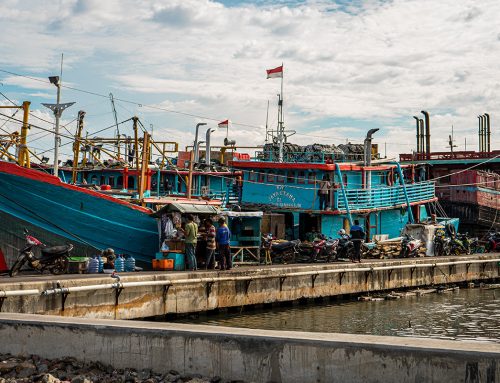INDIA – Case study
PITCH TO POLICY P>P INDIA: FROM IDEAS TO ACTION

Right now in India, potential sustainable building materials are literally going up in smoke. It’s a double-whammy for the environment that represents a missed opportunity to build homes with a reduced carbon footprint; while the burning adds to the CO2 burden in the air, causing severe pollution.
While carpooling to work together, this issue became a hot topic for India-based architects Arundhati Sett and Anamika Garg, who were determined to find a solution.
This issue, combined with a healthy frustration with “greenwashing”, partially performing Green buildings, and the lack of easily accessible avenues to put together a holistic sustainable building, set them on the path to founding EcoCollab, a one-stop-shop for eco-friendly buildings and related solutions.
“We have a big problem, when polluting materials are manufactured in abundance and perfectly good sustainable materials like crop stubble, excavated earth, are getting illegally dumped,” she said.
“Crop stubble burning is a very big problem in the northern area of India and governments offer expensive solutions like weeding machines that farmers can’t afford. The majority of farmers resort to crop stubble burning to clear land, which contributes to severe air pollution.

“Making these materials available as building materials in the marketplace creates huge opportunities to build more sustainably, and solves a problem for the farmers so they no longer need to burn these materials as waste.”
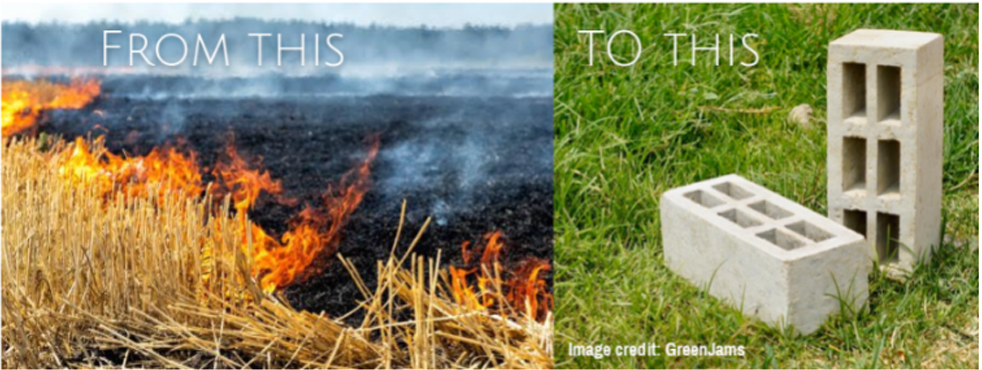
Ms Garg added, “We work with innovators like GreenJams and Earth Blocks to mainstream these materials. Blocks made from crop stubble are larger than conventional bricks, so you require less numbers. This means half the construction cost and time but the biggest advantage is that they are carbon negative.”
The drive to prove that building more sustainably not only reduces carbon emissions but also lowers costs has been made more urgent by the burgeoning building industry.
Under the Government building program, PMAY-U, 11 million new homes were built by March 31, 2022, with another 8 million scheduled to be added nationwide in 2022.
“India will increase its building stock by 70% by 2050,” Ms Sett said.
“In Bangalore, we’re looking at a number of 9000 housing units being added – all built in the conventional polluting way.
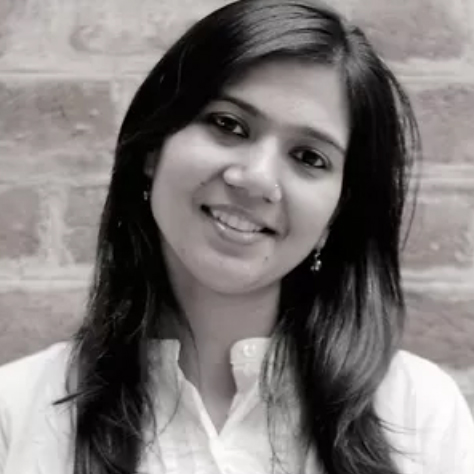
“The way we are building today is unsustainable and needs to be purged. And while alternate materials, green consultant, and voluntary green certification are all available they are perceived to be expensive by regular users, who resort to choosing the conventional way out of sheer convenience.”
EcoCollab had a brilliant and straightforward solution to help address these problems – an online platform that advises on design with input from their ever-growing team of verified sustainability partners. This launched in December 2020.
Ms Garg said GBPN’s Pitch to Policy competition came just weeks later, giving the fledgling team their first chance to road test their concept.
“Our participation in the Pitch to Policy Competition was the first boost that we needed,” she said.
“The fact that we got to run our idea by a lot of sustainability professionals, it was like the first litmus test. Everybody had so many great insights and so much great feedback for us that it gave us the confidence to take it forward and start strengthening our idea even further.”
Driving down emissions through bright ideas
Pitch to Policy is an innovation competition designed to give start-ups a platform to get clever ideas in front of governments where they have potential for high impact.
It was created by GBPN and Monash University and is based on the highly successful ClimateLaunchpad model.
According to Craig Burton, Head of Knowledge and Innovation at GBPN, its aim is to find and promote sustainable building innovations and help turn great ideas into action.
“Pitch to Policy helps make sustainable inventions attractive to governments because mainstream high energy technologies dominate markets. Future market regulation will help but governments can adopt solutions right now and lead by example,” he said.
“For example, it is very difficult to sell low-carbon cement in the open market because incumbent cement providers run highly optimised supply chains which are always cheaper. A government social housing project can trial low carbon cement, claim carbon savings and show the market what’s coming.”
Mr Burton said the competition had been successfully staged in Indonesia and India and many of the participants had gone on to achieve great success using the ideas and approaches learned.
“This is about far more than just getting a certificate that says, ‘Congratulations, you had a brilliant idea’,” he said.
“We don’t simply want to recognise good ideas. We want to provide avenues for turning those ideas into implementable projects that help change the way we build.”

Making sustainability accessible
EcoCollab had a vision to level the playing field and make sustainable housing design accessible to all. They developed a concept for a toolkit that was intended to make sustainable construction more accessible to consumers.
“Our toolkit was aimed at overcoming the initial apprehensions and lack of technical knowledge that a user may feel prevents them from even venturing into the sustainability world,” Ms Garg said.
“Instead of dealing with an army of disparate consultants, we bring the consultants together under one roof as EcoCollab. This makes it easier and less intimidating and helps us get them over the fence to consider sustainable building as an option.”
In 2021, the platform formed the basis of their Pitch to Policy competition entry, which saw them place as finalists for the Pan India Cohort.
‘We pitched a sustainability solutions platform focusing on design-to-delivery of sustainable homes,’ Ms Sett said.
“We wanted the EcoCollab Toolkit to demonstrate that carbon dioxide reduction leads to better ROI and show how to fast-track green policy in India.
“EcoCollab’s research proves that by substituting sustainable materials for usual ones, we could actually prevent 4500kgs of carbon dioxide emissions for every 1000 square feet of built area in the construction phase alone.”
Their research proved convincing to one industrial client, resulting in a project that was able to prevent 9 metric tonnes of emissions with lower construction costs; and establish the merit of the toolkit in practical terms.
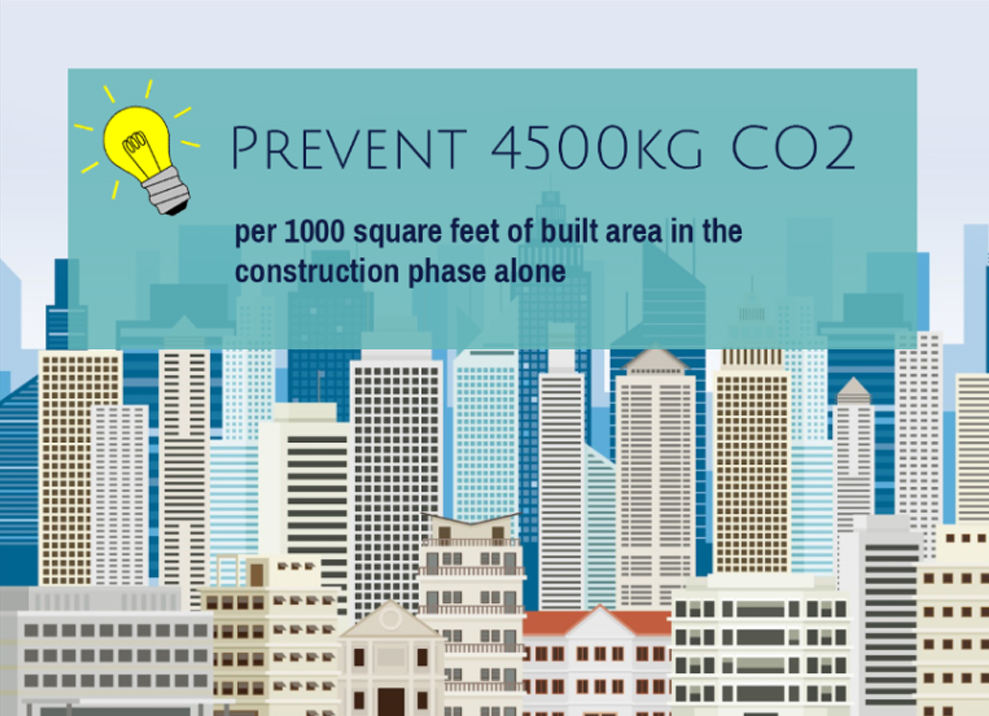
Getting on the fast-track
GBPN’s CEO and Executive Director, Dr Peter Graham said the Pitch to Policy competition had demonstrated its capacity to identify and mentor sustainability champions in the building policy space.
“The competition gives innovative ideas a vital foot in the door so they can be seen by the right people; as well as providing participants with important training and practical experience in how to present their concept effectively in a pitch situation,” he said.
“We have already seen the way the competition has opened doors for EcoCollab, which has since gone on to win the Federation of Indian Chambers of Commerce and Industry Ladies Organisation (FLO) accelerator program in 2022.

“Another finalist, LEAD, has partnered with GBPN on a sustainable affordable housing project covering all of southern India.”
He said the competition would have a measurable impact on preventing CO2 emissions in the real world.
“Pitch to Policy gives participants a fantastic opportunity to transform their innovative ideas into reality and have a genuine impact on the way the building sector operates, leading to actual reductions in carbon emissions,” he said.
“There is so much innovative thinking happening at a grassroots level and some of this brilliant work is lost because of a lack of support and opportunity to progress the work, gain funding and get ideas in front of decision makers. Pitch to Policy provides a platform that will enable us to continue discovering local champions and helping them build a better world.”

